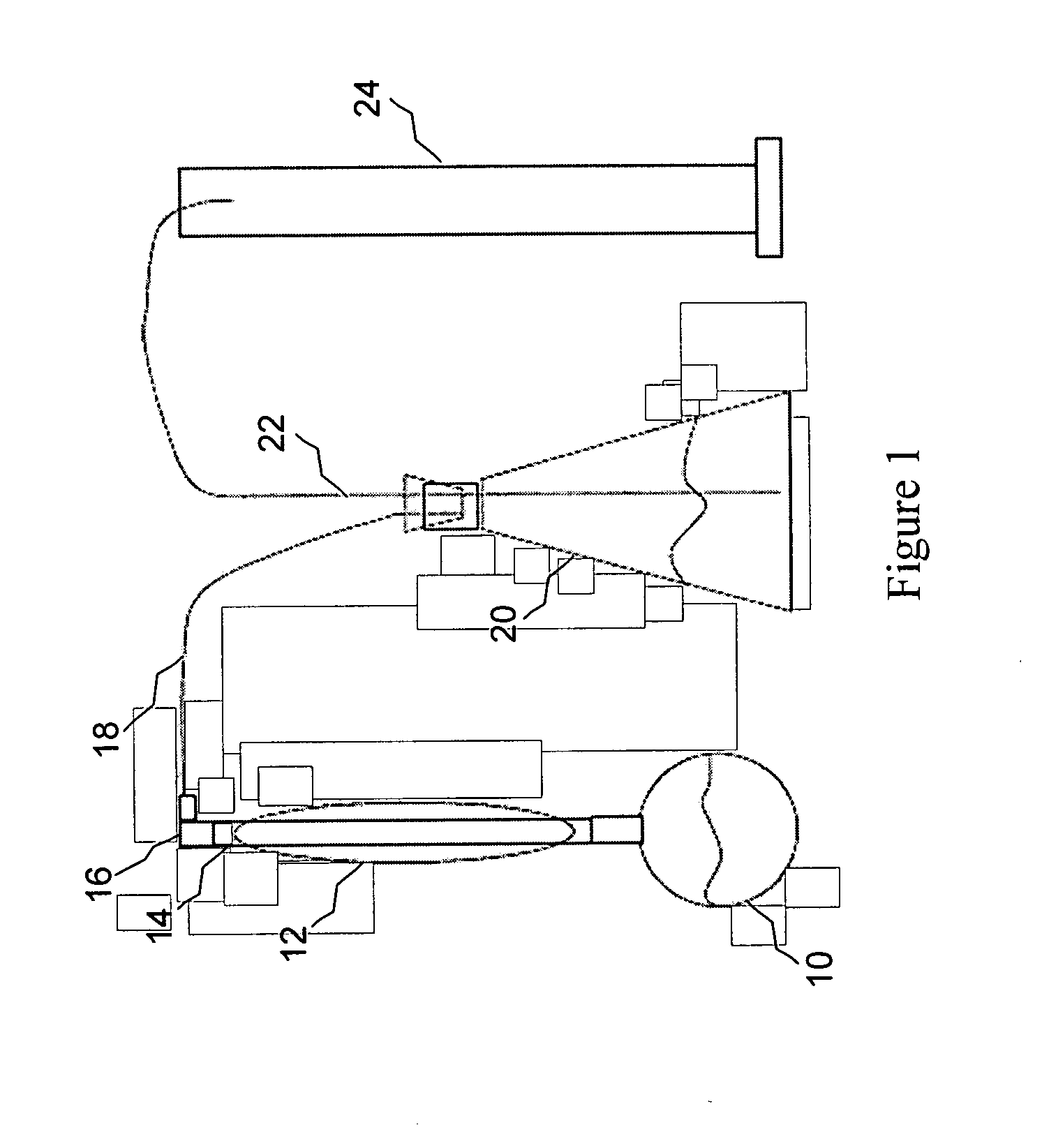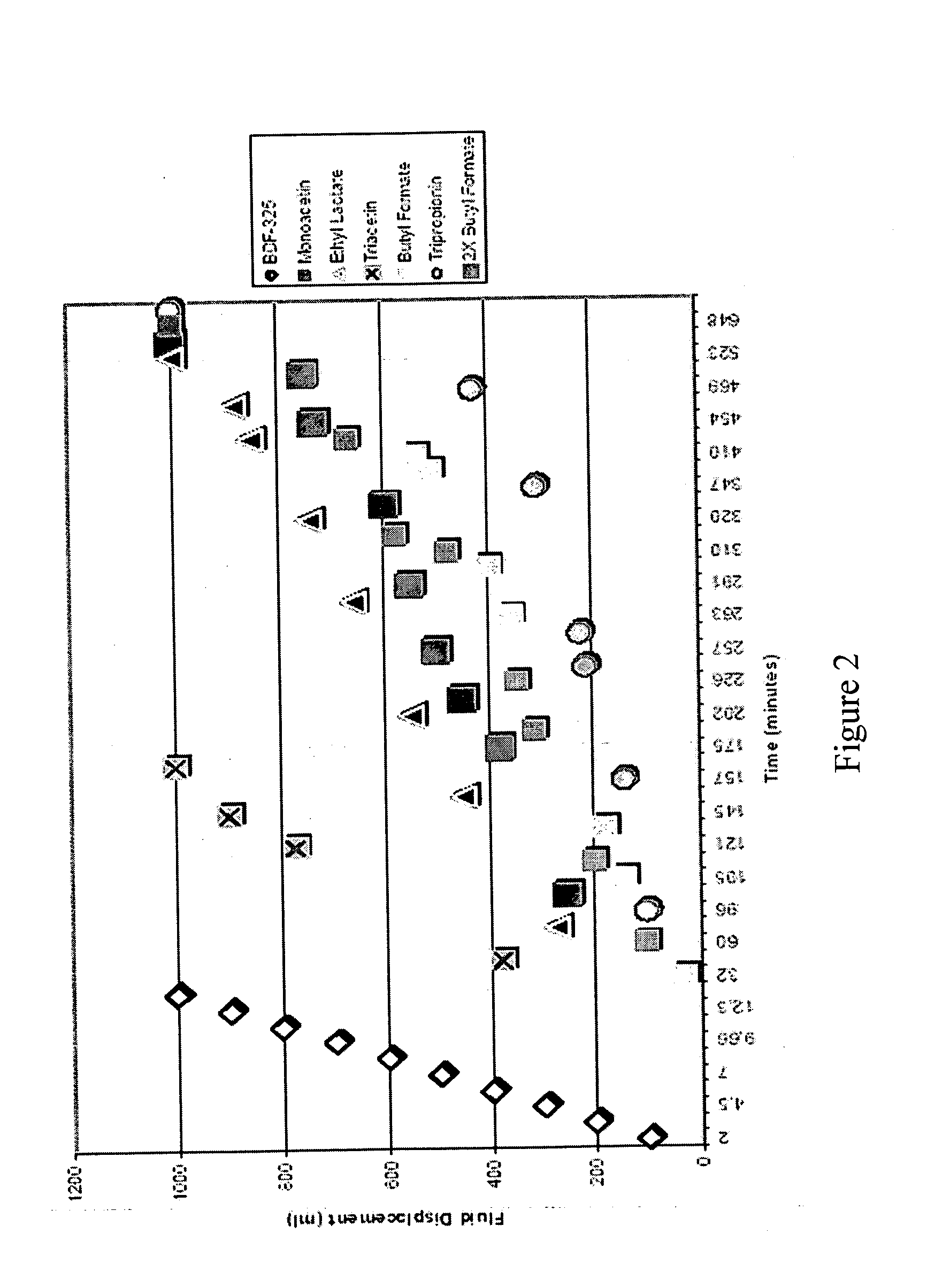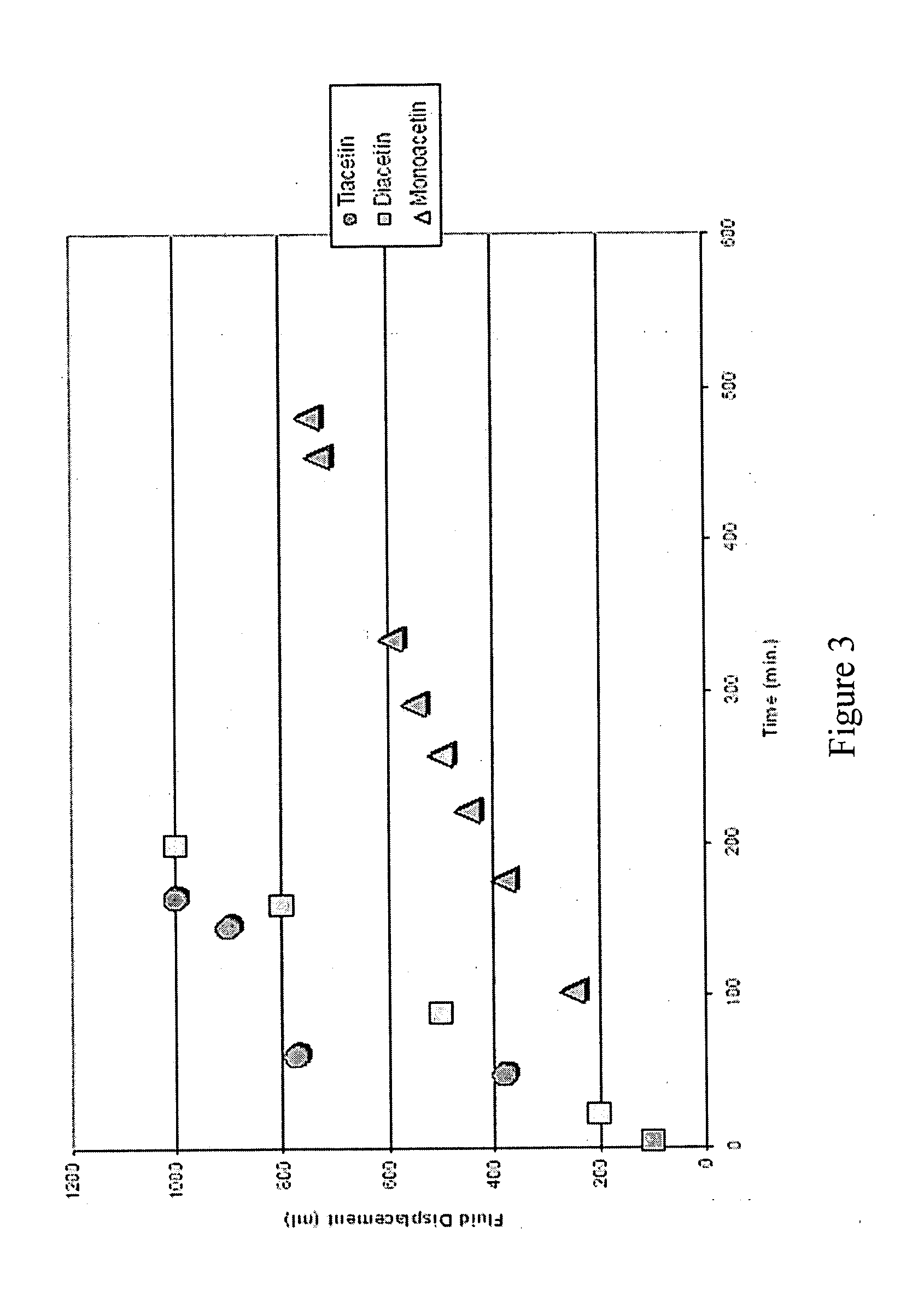Well treatment compositions for use in acidizing a well
a composition and well technology, applied in the direction of well accessories, sealing/packing, chemistry apparatus and processes, etc., can solve the problems of cellulose of which the filter cake is primarily composed, affecting the flow of fluid through injection and production wells, and requiring pumps
- Summary
- Abstract
- Description
- Claims
- Application Information
AI Technical Summary
Problems solved by technology
Method used
Image
Examples
example 1
[0027] Solutions containing various esters of lactic acid and of glycerol (i.e., monoacetin, ethyl lactate, triacetin, tripropionin), butyl formate (a control), and BDF-325 diethyleneglycol diformate (a control) in neutral water were prepared and combined with a molar ratio of CaCO3. Hydrolysis reactions were then carried out using the resulting solutions at 100° C. The hydrolysis reactions were monitored, and the half-lives of the esters were compared. The volume of oil displaced by the CO2 gas is plotted as a function of time in FIG. 2. The half-lives of the esters of lactic acid and of glycerol were longer than that of the BDF-325 diethyleneglycol diformate. The butyl formate to CaCO3 molar ratio was doubled for comparison purposes. The curve for the 1:1 molar ratio reaction was surprisingly similar to that for the 2:1 molar ratio reaction. Doubling the molar ratio of the butyl formate should have lead to an increase in the relative reaction rate; however, this did not happen. It...
example 2
[0028] Solutions containing 10 volume % monoacetin, diacetin, and triacetin in deionized water were prepared and combined with a molar ratio of CaCO3. Hydrolysis reactions were then carried out using the resulting solutions at 100° C. The hydrolysis reactions were monitored, and the half-lives of the esters were compared. The volume of oil displaced by the CO2 gas is plotted as a function of time in FIG. 3. The hydrolysis rates of the triacetin and the diacetin were very similar. However, the monoacetin consumed 4-5 times more slowly relative to the other two acetins, and the monoacetin displayed a half-life within the targeted range. It is believed that the presence of the two hydroxyl groups in monoacetin slowed the rate of hydrolysis through hydrogen bonding with water. Another theory relies on the fact that monoacetin is a mixture of isomers. The acetate group may be on either a primary hydroxyl group or a secondary group. One isomer may be more reactive than the other. Despite ...
example 3
[0029] Solutions containing butyl lactate and butyl formate (a control) in deionized water were prepared and combined with a molar ratio of CaCO3. Similar solutions in which the butyl formate and butyl lactate to CaCO3 molar ratio were doubled were also prepared for comparison purposes. Hydrolysis reactions were then carried out using the resulting solutions at 100° C. The hydrolysis reactions were monitored, and the half-lives of the esters were compared. The volume of oil displaced by the CO2 gas is plotted as a function of time in FIG. 4. The reaction rate of the butyl lactate was faster than that of the butyl formate. This difference in reaction rates was probably due to the difference in solubilities of these two compounds in water. That is, butyl lactate is slightly soluble in water while butyl formate exhibits poor solubility in water. Doubling the concentration of butyl lactate doubled its reaction rate. The poor solubility of butyl formate governed its slow reaction rate, m...
PUM
 Login to View More
Login to View More Abstract
Description
Claims
Application Information
 Login to View More
Login to View More - R&D
- Intellectual Property
- Life Sciences
- Materials
- Tech Scout
- Unparalleled Data Quality
- Higher Quality Content
- 60% Fewer Hallucinations
Browse by: Latest US Patents, China's latest patents, Technical Efficacy Thesaurus, Application Domain, Technology Topic, Popular Technical Reports.
© 2025 PatSnap. All rights reserved.Legal|Privacy policy|Modern Slavery Act Transparency Statement|Sitemap|About US| Contact US: help@patsnap.com



